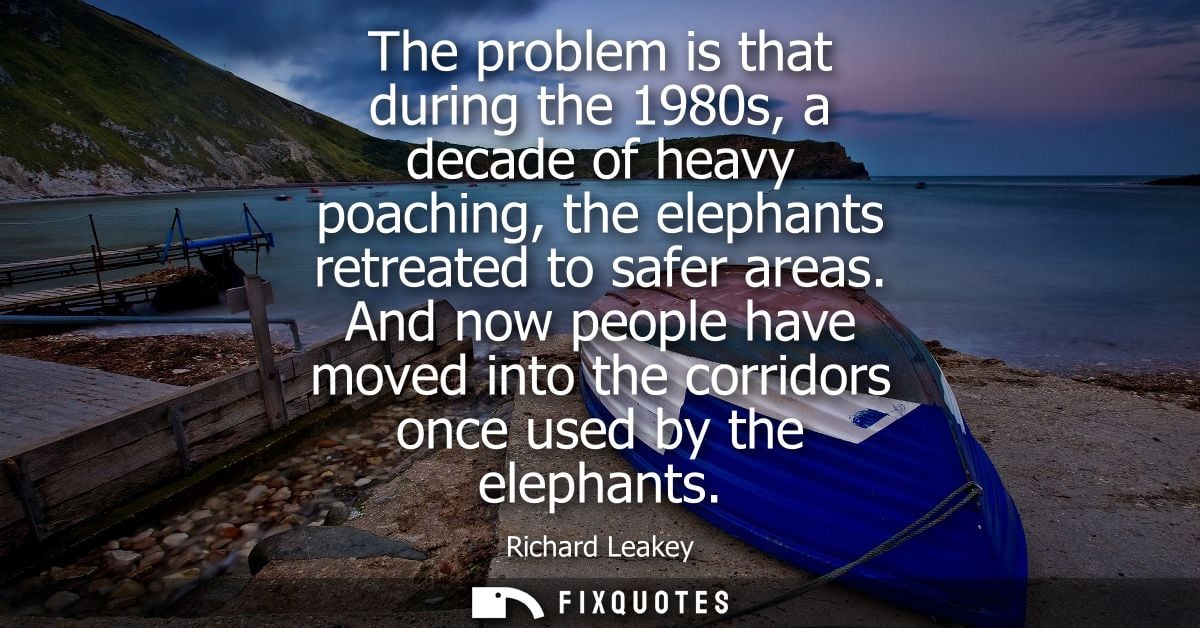"The problem is that during the 1980s, a decade of heavy poaching, the elephants retreated to safer areas. And now people have moved into the corridors once used by the elephants"
About this Quote
During the 1980s, rampant poaching created profound changes in the behavior and movement of elephants. Under the constant threat of hunters, elephants adapted by seeking refuge in safer, more remote territories, abandoning traditional migratory routes and habitats that had become too dangerous. These retreat patterns were a survival response to the decade’s crisis, reflecting both the intelligence and adaptability of the species under human pressure. Elephants have historically relied on wide-ranging corridors to move between feeding, breeding, and watering grounds, corridors passed down through generations as part of their cultural memory.
However, as poaching abated or shifted and elephant numbers stabilized or even began to recover in some regions, another set of challenges emerged. Human populations expanded, seeking land for agriculture, settlement, and development. The very corridors that had served as lifelines for elephants during their migrations were increasingly occupied and fragmented by human activity. As people moved into these spaces, vital pathways connecting elephant habitats were blocked, reducing the animals’ ability to move freely and access resources.
This intersection of elephant and human interests has set the stage for ongoing conflict. Elephants returning to their ancestral routes find fences, farms, and villages, leading to crop raiding, property damage, and sometimes tragic confrontations. For local people, elephants can represent both an economic threat and a danger to personal safety; for elephants, the loss of corridors jeopardizes not only their immediate access to food and water but also their genetic diversity and long-term survival as populations become isolated.
The situation described underscores how the legacy of one conservation crisis, poaching, can persist in changed landscapes and social dynamics long after immediate threats have been addressed. It highlights the need for integrated planning that protects both wildlife and human livelihoods, especially through the preservation and restoration of vital migratory corridors for elephants.
More details
About the Author

